- PDF
Car Claim
- PDF
Article Overview
The following article describes how to use the Workflow Manager with a car claim process.
Use Case
An insured car owner was involved in a car accident. To start a car claim process, the owner logs in to the insurance company's portal. The owner clicks the link and opens the process. The process starts with some pre-filled information. The owner fills out new relevant car claim information and submits it. The data is integrated into the company's CRM system for an agent to review. The agent receives an email with a link to the process and reviews it. If all is ok, the process is over and the car owner is informed via email about the next steps. If not, the agent re-sends the process to the owner to complete the missing information. Once all is complete, an end-of-process email is sent to the owner.
Questions and Answers
High-Level Questions:
Q: What is the name of the process?
A: Car claim.
Q: What is the goal of the process?
A: Provide a quick and user-friendly car claim process.
Q: What information is being collected during the process?
A: Information relevant to the car claim process.
Q: What is the look and feel of the process?
A: Using the company's brand and logo.
End-Users Questions:
Q: Who are the roles that will interact with the processes?
A: The car owner and an agent.
Q: How do I communicate with the end-users?
A: Emails. Each end-user will be informed about the progress of the process.
Q: How do I implement compartmentalization between different end-users?
A: By creating different flows or paths.
Q: Do I need to authenticate end-users?
A: By using a One-Time Password (OTP).
Q: What is the process flow between all end-users? Who starts the process and who finishes it?
A: The car owner starts the process and submits it for review by the agent. If the agent approves the process is over. If not, the process will be sent to the owner for corrections and then back to the agent.
Workflow Questions:
Q: Where is the process initiated from? A single initiation channel or multiple channels?
A: A link to the process is sent by the agent using a CRM system.
Q: What happens to the collected data?
A: The data will be presented on top of the original PDF and integrated into the company's database.
Q: Does my process split into different paths according to end-users and roles?
A: Yes. One path of the agent immediately approves the information provided by the car owner and one path if corrections are needed.
Q: When does my process end?
A: The process ends when the agent submits it.
Visualizing, Mapping, and Configuring
Create a new process and access the Workflow Manager. Visualize, map, and configure the process:
- Drag and drop a Start building block and configure its properties.
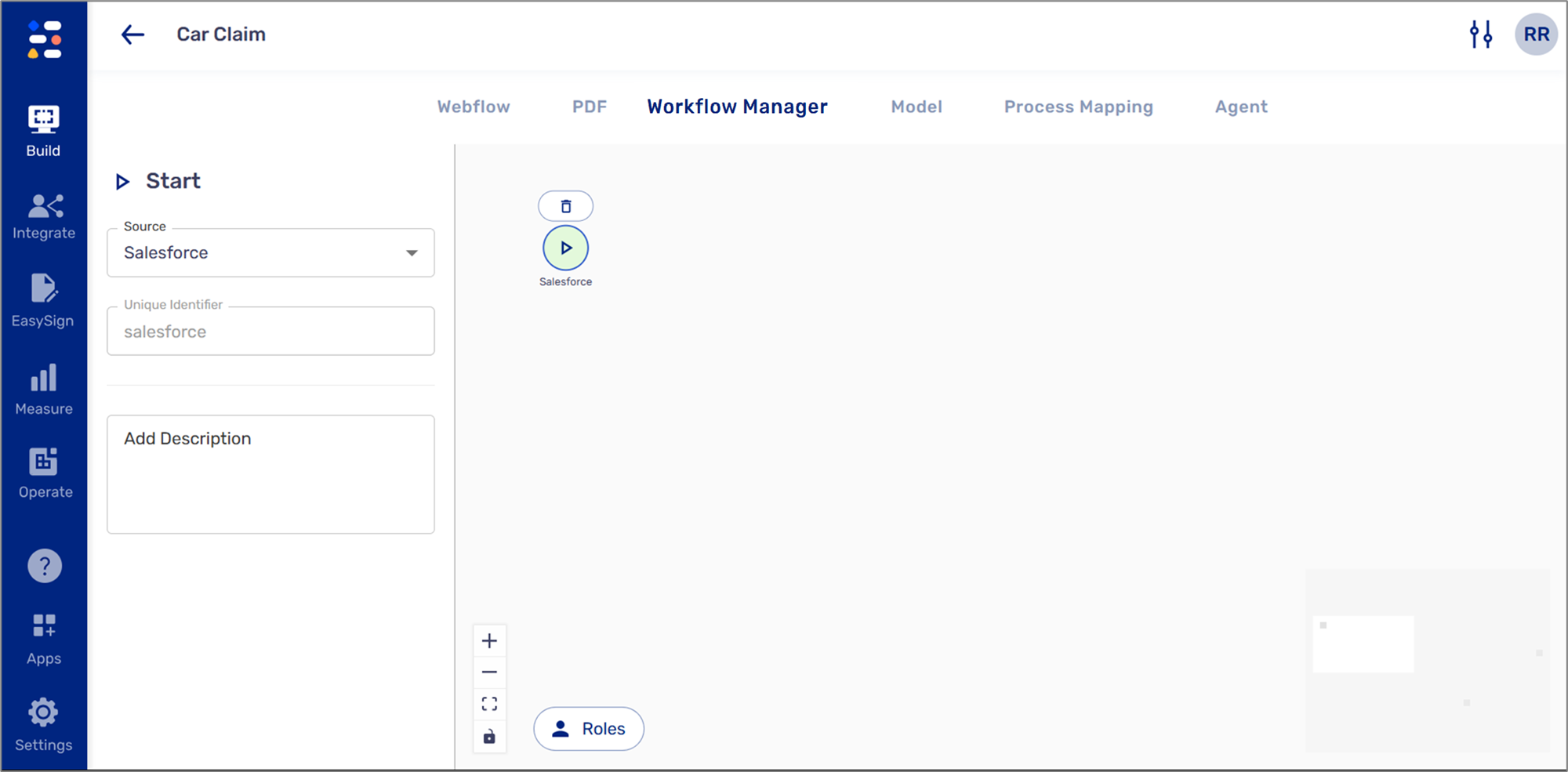
Figure 1: Start - Salesforce
- Drag and drop an Integration building block.
- Connect the Start building block with the Integration building block.
- Drag and drop a Generate Webflow building block and configure its properties.
- Connect the Integration building block with the Generate Webflow building block.
- Drag and Drop an Email building block.
- Connect the Generate Webflow Link building block with the Email building block.
- Drag and drop a Webflow Submission building block.
- Connect the Email building block with the Webflow building block.
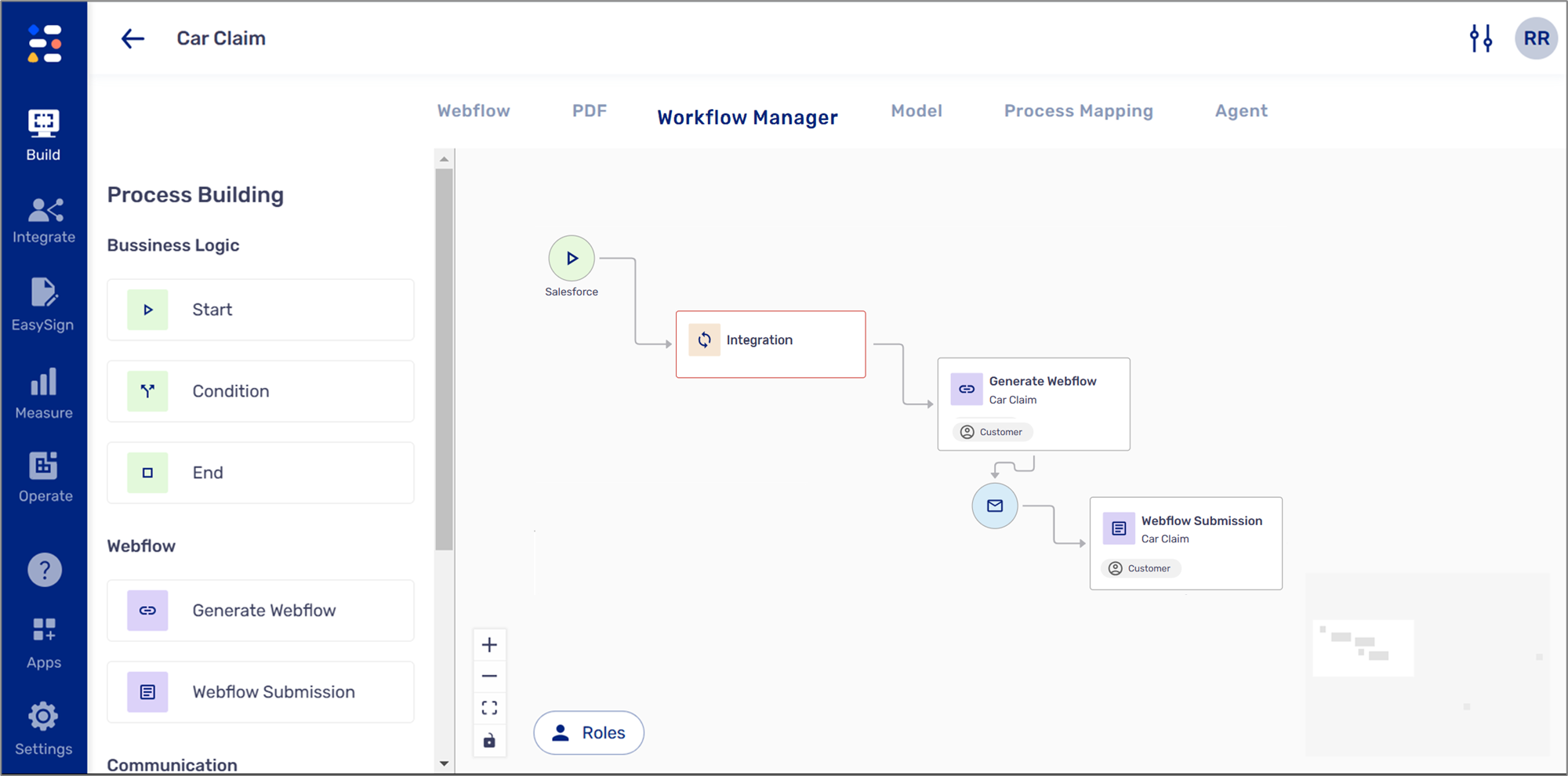
Figure 2: Generate Webflow
- Drag and drop an Integration building block.
- Connect the Webflow Submission building block with the Integration building block.
- Drag and drop a Generate Webflow building block and configure its properties.
- Connect the Webflow Submission building block with the Generate Webflow building block.
- Drag and drop an Email building block.
- Connect the Generate Webflow building block with the Email building block.
- Drag and drop a Webflow Submission building block.
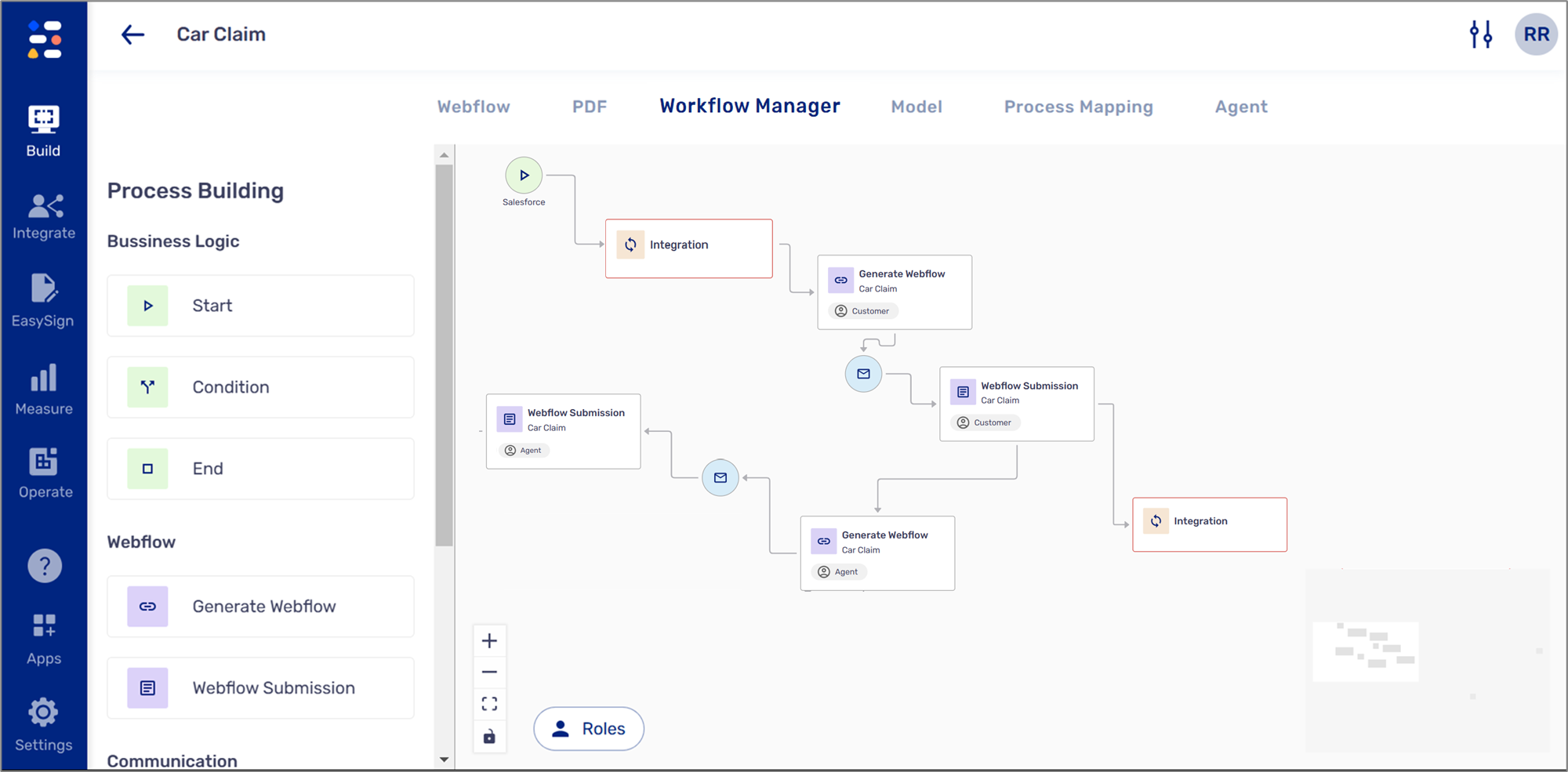
Figure 3: Webflow Submission
- Drag and drop a Condition building block.
- Add a label - Info ok?
- Connect the Webflow Submission building block to the Condition building block.
- Drag and drop an Email building block.
- Connect the Condition building block to the Integration building block (True).
- Drag and drop an End building block.
- Connect the email building block to the End building block.
- Drag and drop a Generate Webflow building block and configure its properties.
- Connect the Condition building block to the Generate Webflow building block (False).
- Drag and drop an Email building block.
- Drag and drop a Webflow Submission building block.
- Connect the email building block to the Webflow Submission building block.
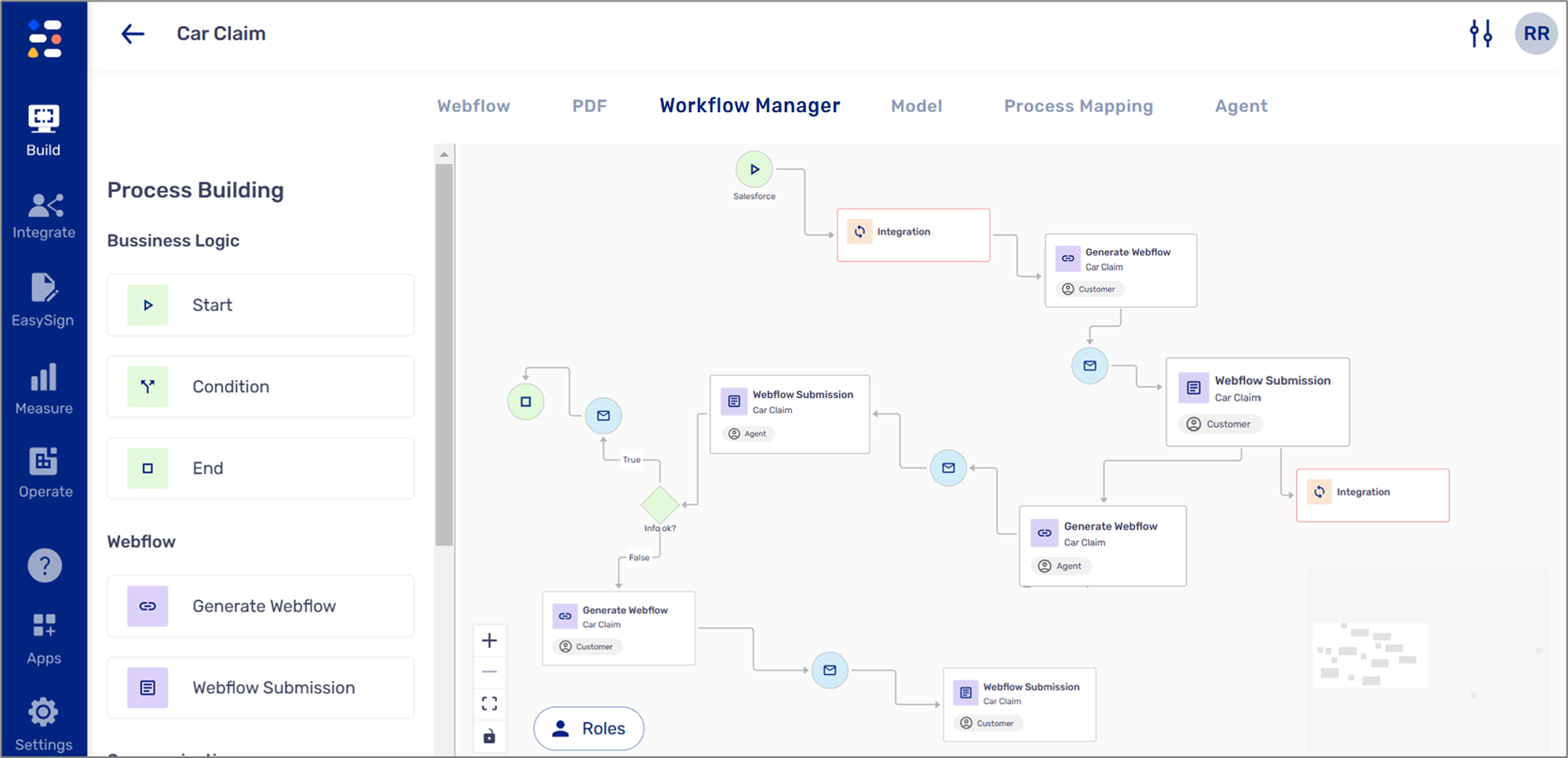
Figure 4: Condition Split
- Drag and drop an Integration building block.
- Drag and drop an Email building block.
- Connect the Webflow building block to the Integration building block.
- Connect the Webflow building block to the Email building block.
- Connect the Integration building block to the End building block.
- Connect the Email building block to the End building block.
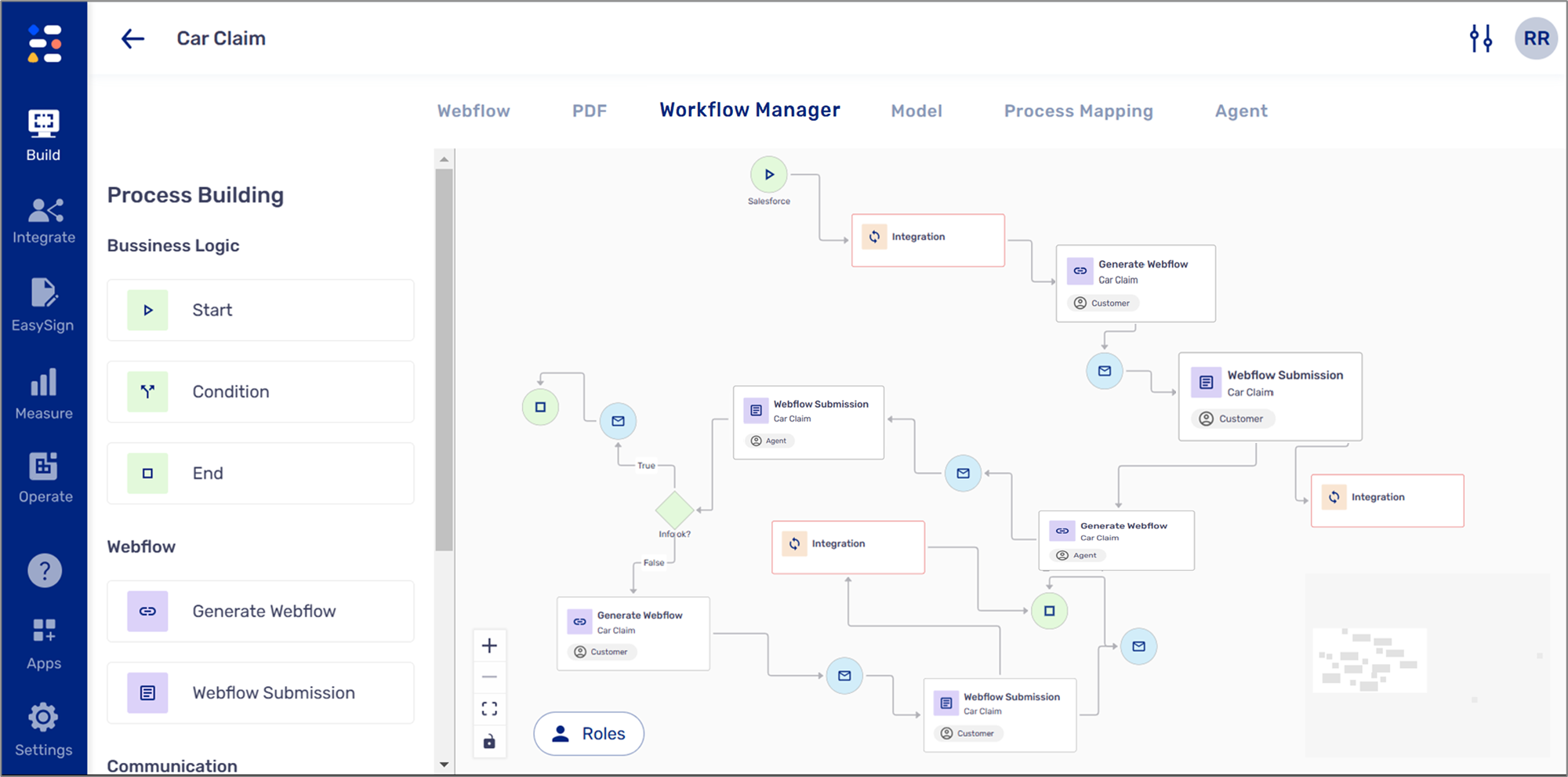
Figure 5: End
Build the Process and Business Logic
(See Figure 6)
Click a Webflow and use the Edit Webflow button to access the Webflow and build the physical structure of your process and the business logic. In addition, create required services, roles, and authentications.
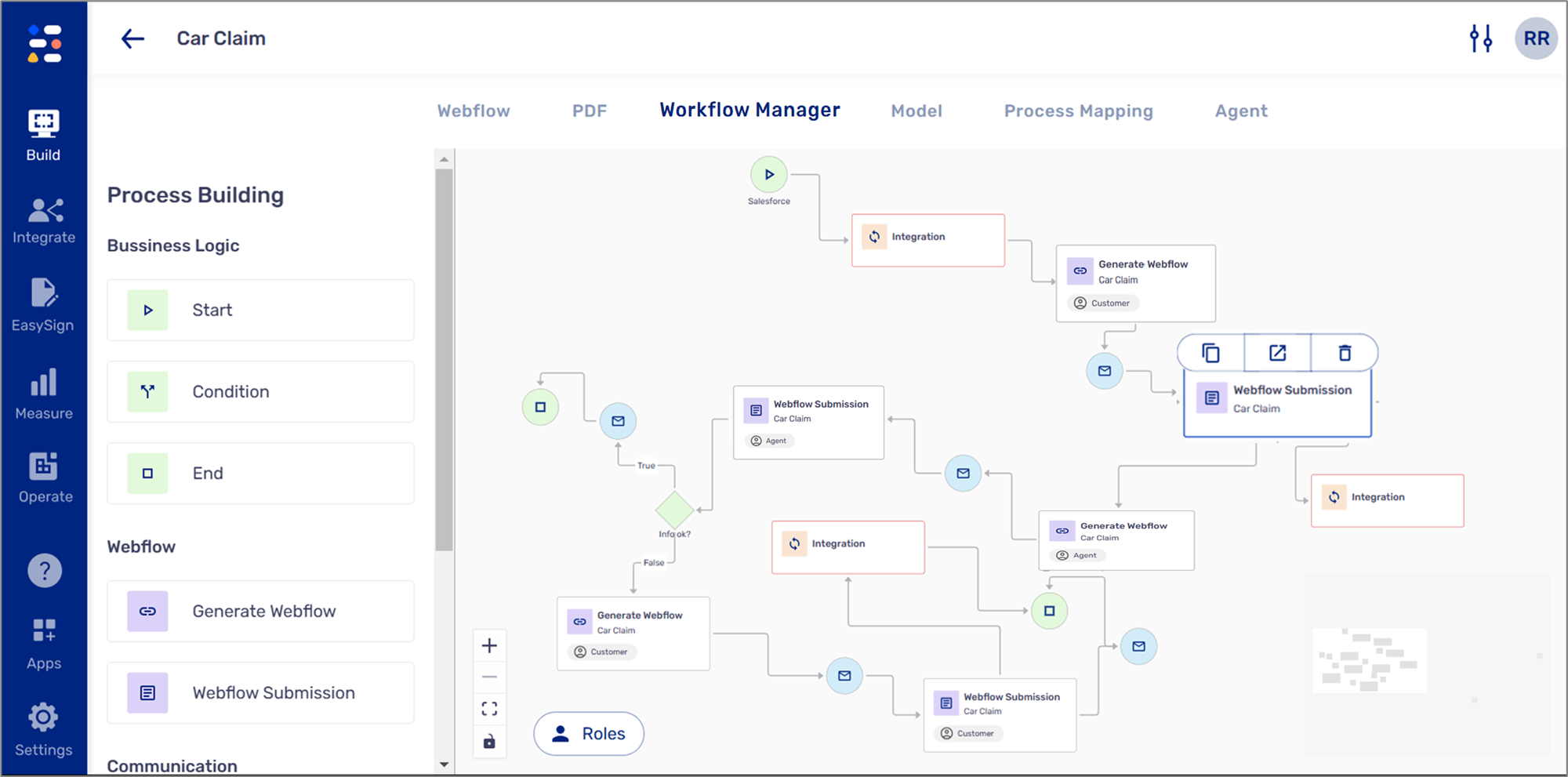
Figure 6: Edit Webflow
Configure and Complete the Workflow
(See Figure 7)
Access the Workflow Manager and finish to configure the Workflow:
- Select the Integrations
- Write labels and comments
- Configure emails
- Set authentications
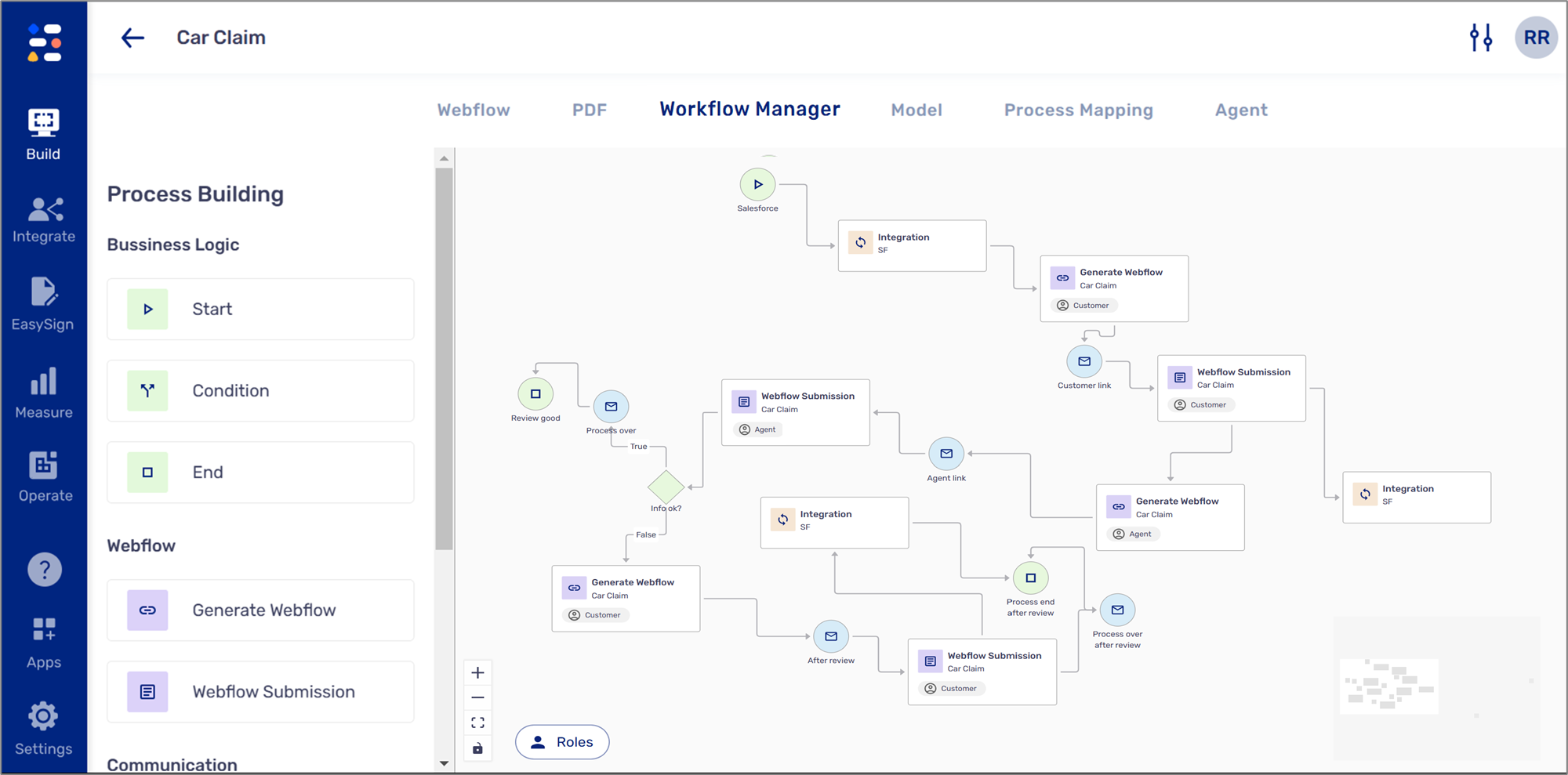
Figure 7: Complete Configuration

